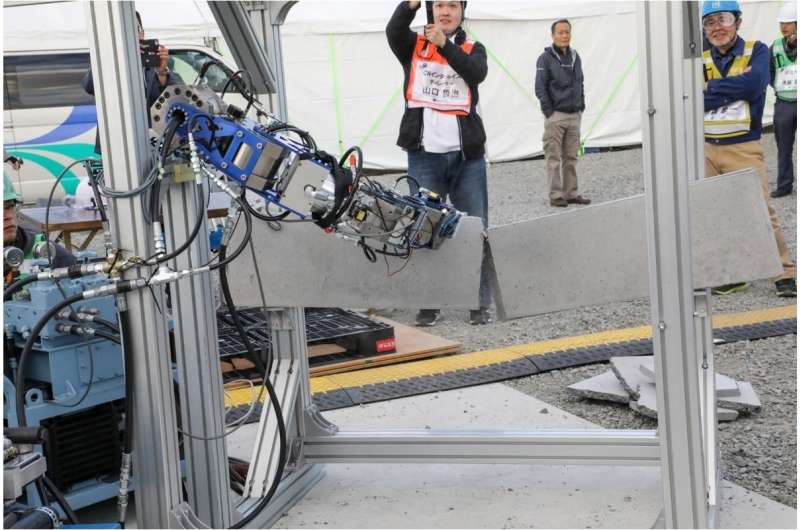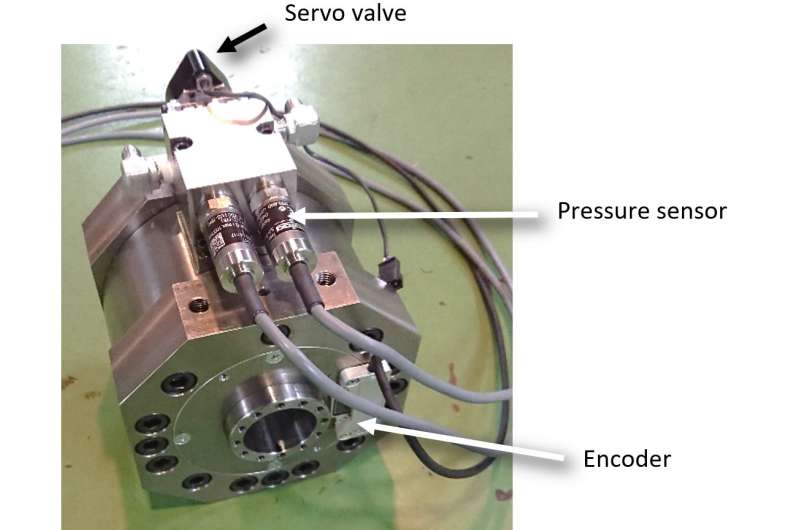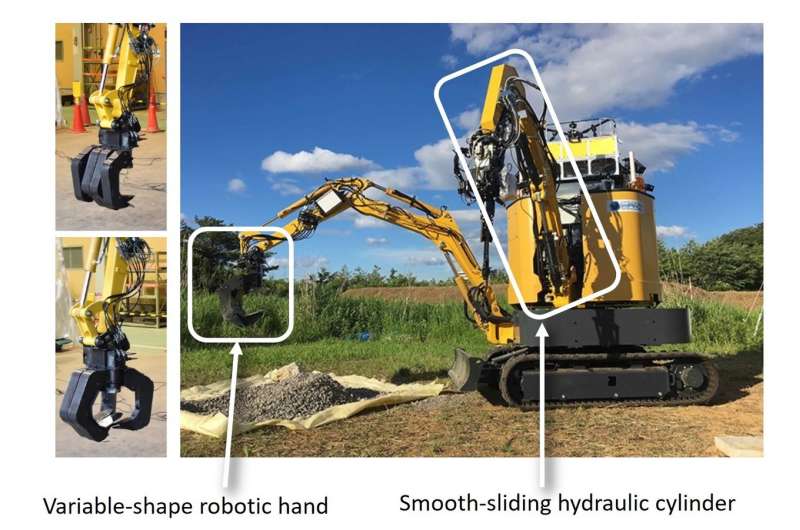New hydraulic actuator will make robots tougher

Researchers at the Tokyo Institute of Technology (Tokyo Tech) have developed a hydraulic actuator that will allow tough robots to operate in disaster sites and other harsh environments. The Tokyo Tech Venture H-MUSCLE Corporation was established to pursue applications for the actuator, and shipping of product samples will begin in February 2019.
The majority of today's robots are driven by electric motors, but hydraulic actuators, with their high output and impact resistance, would be well-suited to robots operating in harsh environments. However, typical hydraulic actuators are developed for industrial machinery, like power shovels, and are too large and heavy to be used in robots; nor can they provide smooth movement or force control.
Tokyo Tech School of Engineering professor Koichi Suzumori and colleagues developed a hydraulic actuator to solve these issues. The actuator offers greatly increased power and shock resistance compared with conventional electric motors. It also grants a smaller size, higher output (force-to-mass ratio), and smoother control compared with conventional hydraulic actuators. Providing high power, durability, and excellent control, the actuator will allow robots to operate in the harshest of environments and perform tough work with a gentle touch.
This hydraulic actuator is the result of the Tough Robotics Challenge, organized by the Impulsing Paradigm Change through Disruptive Technologies Program (ImPACT) of the Cabinet Office of Japan. Tokyo Tech; JPN Co., Ltd.; Bridgestone Corporation; and KYB Corporation; along with other universities and enterprises concerned with hydraulic equipment, have participated in development of the hydraulic actuator for tough robots since 2014. To promote adoption of the technology, H-MUSCLE will ship samples of its hydraulic cylinders and hydraulic motors to domestic manufacturers, expand its lineup of actuators for future sale, and explore further applications.

Background
The ImPACT Tough Robotics Challenge (2014-2018, Program Manager: Satoshi Tadokoro, Professor, Tohoku University) has conducted research with the aim of creating robots for tough operation, even in extreme disaster sites. As a part of this project, hydraulic actuators specifically for robots and their robotic application was set as a research theme. Koichi Suzumori (robotics, actuator engineering) at Tokyo Tech was the leader of the group with participants Tokyo Tech; Okayama University; Ritsumeikan University, JPN Co., Ltd.; Bridgestone Corporation; and KYB Corporation. With the cooperation of many other enterprises with highly specialized technologies, they succeeded in developing an actuator for hydraulic robots which is small, lightweight, high-output, and smooth-sliding, something not available in existing products.
Merits of small, lightweight, smooth-sliding actuators
The new hydraulic actuator offers the following advances over existing hydraulic actuators.
- Small size. Japanese Industrial Standards (JIS) specifies only cylinders with an internal diameter of 35 mm or greater. However, robots require smaller cylinders. H-MUSCLE has developed cylinders with an internal diameter of 20 to 30 mm in collaboration with JPN Co., Ltd.
- High force-to-mass ratio. "Force" is the generated axial force, and "mass" is the weight of the cylinder itself. Robots require a higher force-to-mass ratio than general stationary industrial machinery. Though the figure is only of a representative sample, H-MUSCLE cylinders can output an overwhelmingly higher value. This was made possible by (1) a drive pressure of 35 MPa, (2) titanium and magnesium alloys, and (3) inventive design.
- Smooth sliding. This cylinder operates at remarkably lower pressure than that of normal JIS cylinders. Conventional hydraulic cylinders and motors have stiff seals between the piston and the cylinder to seal in the fluid, and the great friction from this prevented smooth movements and control of force. With low-friction seals and inventive design, this research realized low friction, about one-tenth of conventional products. This addresses the difficulty in precise movement and force control found with conventional hydraulic robots.
ImPACT has built several tough robot prototypes to test potential applications for the hydraulic actuator.

Provided by Tokyo Institute of Technology





















